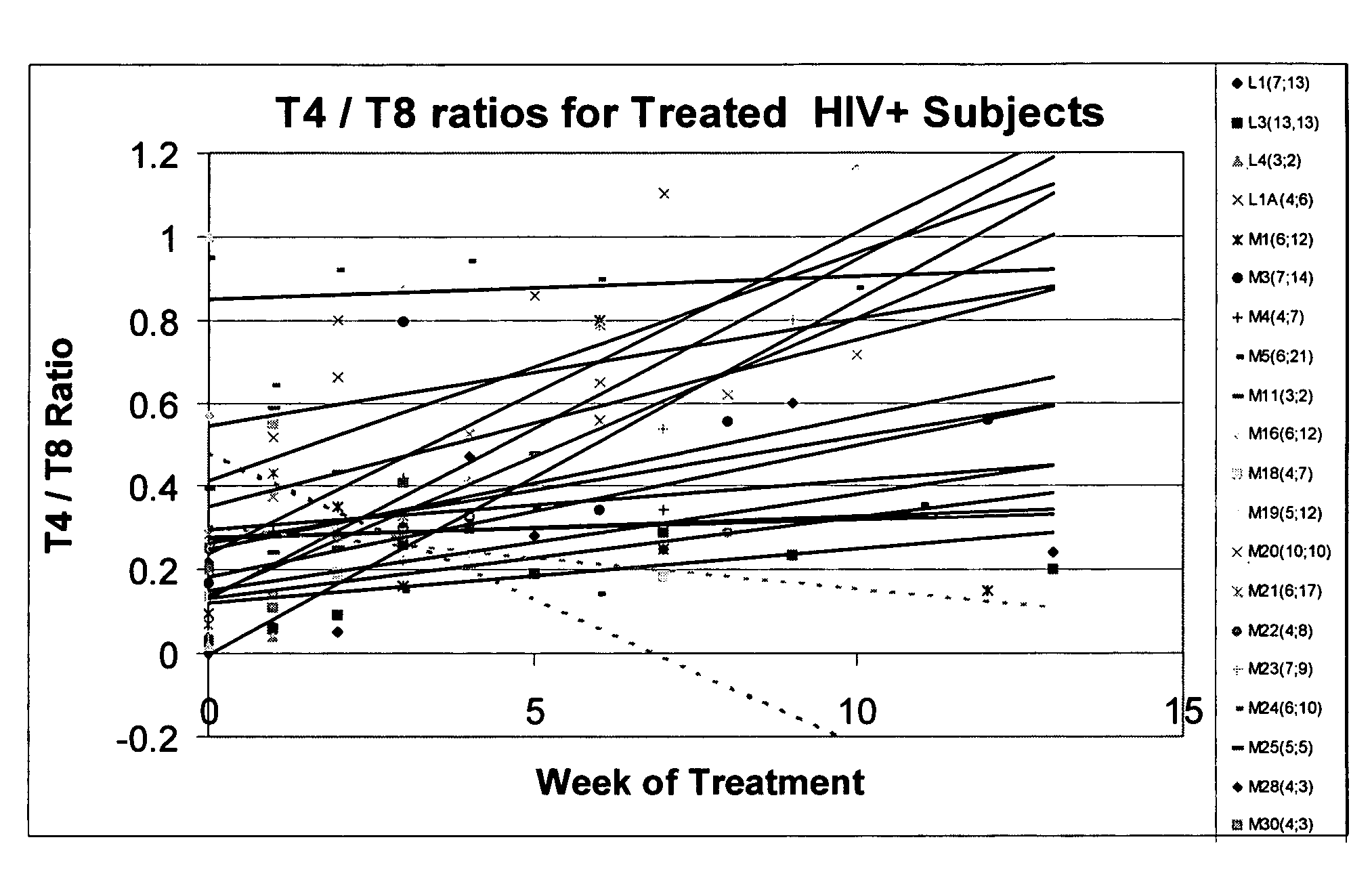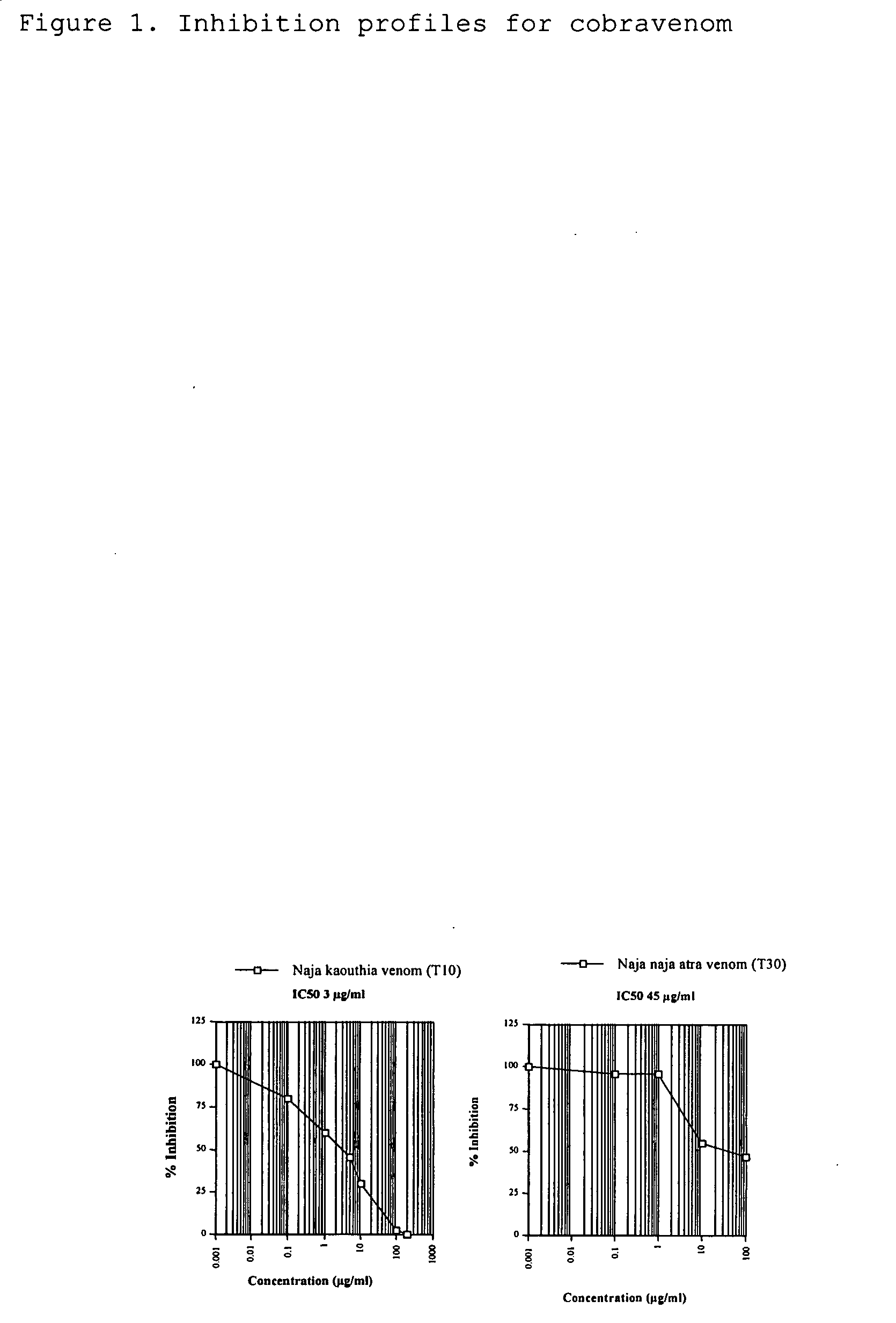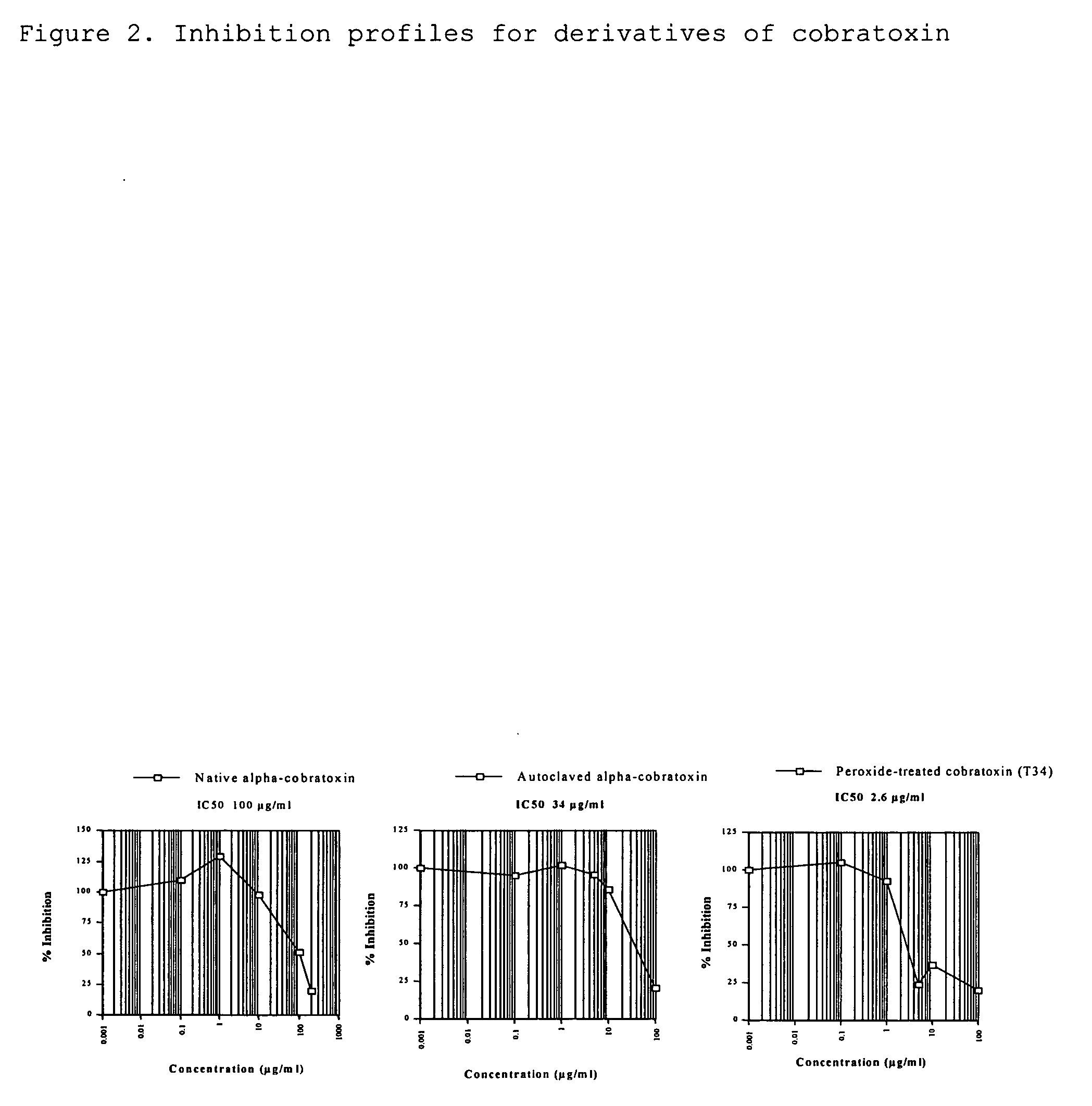Modified venom and venom components as anti-retroviral agents
a technology of venom and components, applied in the field of proteins, can solve problems such as interfering with the activity of the other, and achieve the effect of high antiviral activity
- Summary
- Abstract
- Description
- Claims
- Application Information
AI Technical Summary
Benefits of technology
Problems solved by technology
Method used
Image
Examples
example 1
[0039] Venom Modification
[0040] Venom from the Thailand cobra (Naja naja kaouthia) was purchased from Biotoxins (Florida) or Kentucky Reptile Zoo (Kentucky) Employing the procedure described by Sanders (Pat. No. 3,888,977) and Miller, et al. (1977) the reactive molecule, hydrogen peroxide, the precursor protein is modified through the addition of oxygen molecules.
[0041] Other venoms detoxified in this manner include venoms from Naja naja atra and Bungarus multicintus.
example 2
[0042] Neurotoxin Modification
[0043] Cobratoxin (CTX) has a molecular weight of 7821 and is composed of 71 amino acids. Alpha-cobratoxin from the Thailand cobra (Naja naja kaouthia) was purchased from Biotoxins, Kississimi, Fla. Employing the procedure described by Sanders (U.S. Pat. No. 3,888,977) and Miller, et al. (1977) the reactive molecule, hydrogen peroxide, the precursor protein is modified through the addition of oxygen molecules.
[0044] A modified neurotoxin (MCTX) solution has an acidic pH and a pI of approximately 4.5. Cobratoxin solutions are basic having pH of 10.4. In solution, the drug migrates through molecular sieving gels as monomers, dimers and tetramers. Cobratoxin migrates under these conditions as a monomer. Upon analysis on NuPAGE (Stratagene) SDS polyacrylamide gel electrophoresis (PAGE) the cobratoxin migrates as a 14 Kd and 8 Kd protein with a reference to comparable proteins under unreduced and reduced conditions respectively. MCTX migrates under reduced...
example 3
[0047] The endpoint of the above reactions are most easily determined by assessing the toxicity of the preparation in mice. Mice are sensitive to the actions of many venoms particularly to that of snakes. The proven LD50 of pure alpha-cobratoxin in mice is 1.2 mcg with death observable within hours when injected subcutaneously or intra-peritoneally. If the animal survives overnight it is accepted that the material is not lethal and defines the endpoint of the assay. By administering the composition of the invention at set periods a reduction in the material's toxicity can be observed as an increase in time to death. When 5 mg of the protein solution can be administered without inducing death then the reaction process is complete. This represents more than a 4000 fold reduction in toxicity. It is at this point that the solution takes on its antiviral properties and native cobratoxin does not demonstrate antiviral activity in similar assays.
PUM
| Property | Measurement | Unit |
|---|---|---|
| Weight | aaaaa | aaaaa |
| Fraction | aaaaa | aaaaa |
| Volume | aaaaa | aaaaa |
Abstract
Description
Claims
Application Information
 Login to View More
Login to View More - R&D
- Intellectual Property
- Life Sciences
- Materials
- Tech Scout
- Unparalleled Data Quality
- Higher Quality Content
- 60% Fewer Hallucinations
Browse by: Latest US Patents, China's latest patents, Technical Efficacy Thesaurus, Application Domain, Technology Topic, Popular Technical Reports.
© 2025 PatSnap. All rights reserved.Legal|Privacy policy|Modern Slavery Act Transparency Statement|Sitemap|About US| Contact US: help@patsnap.com



